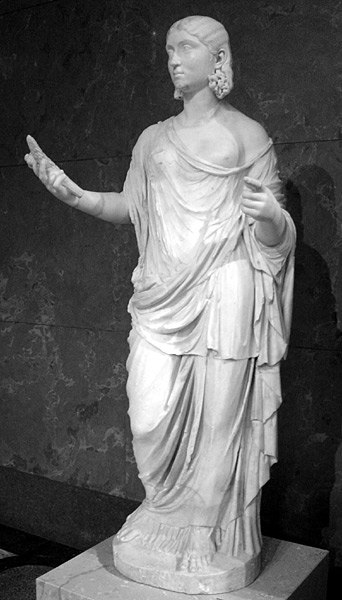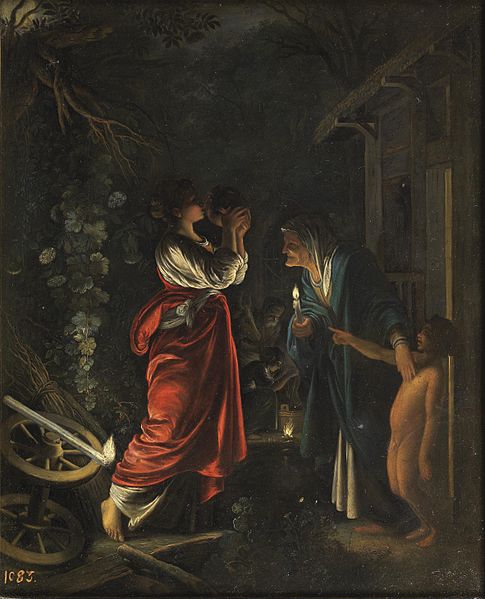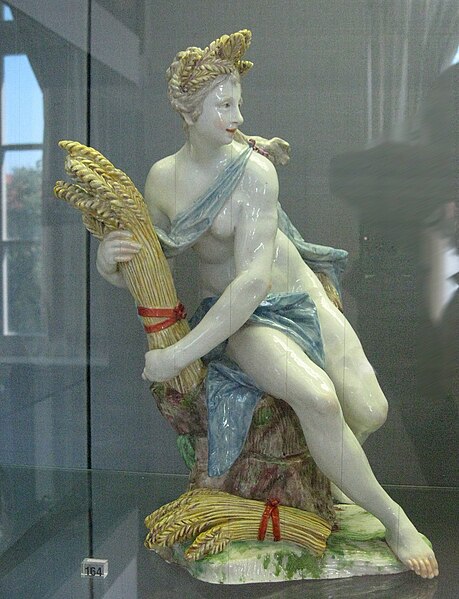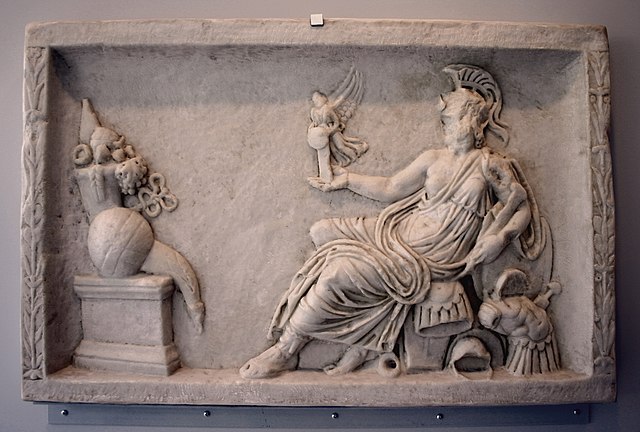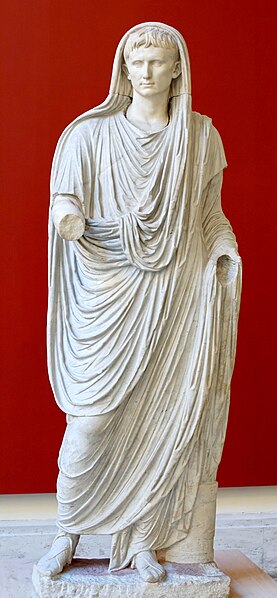In ancient Roman religion, Ceres was a goddess of agriculture, grain crops, fertility and motherly relationships. She was originally the central deity in Rome's so-called plebeian or Aventine Triad, then was paired with her daughter Proserpina in what Romans described as "the Greek rites of Ceres". Her seven-day April festival of Cerealia included the popular Ludi Ceriales. She was also honoured in the May lustration (lustratio) of the fields at the Ambarvalia festival: at harvest-time: and during Roman marriages and funeral rites. She is usually depicted as a mature woman.
Seated Ceres from Emerita Augusta, present-day Mérida, Spain (National Museum of Roman Art, 1st century AD)
Funerary statue of an unknown woman, depicted as Ceres holding wheat. Mid 3rd century AD. (Louvre)
During her long, torch-lit search for her daughter, Proserpina, Ceres drinks water given her by Hecuba, and is mocked by the boy, Askalabos, for spilling some of it. She will transform him into a lowly "star-lizard' or newt (Latin; stellio) as punishment. The episode is in Ovid's, Metamorphoses V, lines 449-450. Oil-paint on copper, by Adam Elsheimer and workshop, copy circa 1605, held by the Museo Nacional del Prado. From an original in the collection of Alfred and Isabel Bader
Ceres with cereals, a late 18th century work by Dominik Auliczek of the Nymphenburg Porcelain Manufactory
Religion in ancient Rome consisted of varying imperial and provincial religious practices, which were followed both by the people of Rome as well as those who were brought under its rule.
Defaced Dea Roma holding Victory and regarding an altar with a cornucopia and other offerings, copy of a relief panel from an altar or statue base
Augustus as Pontifex Maximus (Via Labicana Augustus)
Cybele enthroned, with lion, cornucopia and Mural crown. Roman marble, c. 50 AD (Getty Museum)
Relief panel from an altar to Venus and Mars depicting Romulus and Remus suckling the she-wolf, and gods representing Roman topography such as the Tiber and Palatine Hill


